|
|
Fokker
Fokker was a Dutch aircraft manufacturer named after its founder, Anthony Fokker (1890-1939).
In 1910 Anthony Fokker was sent to Germany by his father to receive training as an automobile mechanic. There he started a factory in Johannisthal near Berlin (Fokker Aeroplanbau), which later moved to Schwerin. Fokker Aviatik GmbH was entered in the trade register at Berlin on 22 February 1912. Fokker sold several Fokker Spin monoplanes to the German government and continued to supply the German Army in World War I. When it was realized that arming these scouts with a machine gun firing through the propeller was desirable, Fokker developed a synchronization gear similar to that patented by Franz Schneider from Switzerland.
In 1919 Fokker moved back to the Netherlands and founded the Nederlandsche Vliegtuigenfabriek (Netherlands Aircraft Manufacturing Company, to conceal the Fokker brand because of his World War I involvement). Despite the strict disarmament conditions in the Treaty of Versailles, Fokker did not return home empty-handed. In 1919, he arranged an export permit and brought six entire trains of parts and 180 aircraft across the Dutch-German border, among them 117 Fokker C.Is, D.VIIs, and D.VIIIs. This initial stock enabled him to start quickly. After his company's relocation, many Fokker C.I and C.IV military airplanes were delivered to Russia, Romania, and the still clandestine German air force. Success on the commercial market came with the development of the Fokker F.VII, a high-winged aircraft capable of taking on various types of engines. Fokker continued to design and build military aircraft, delivering planes to the Royal Netherlands Air Force. Foreign military customers eventually included Finland, Sweden, Denmark, Norway, Switzerland, Hungary, and Italy. These countries bought substantial numbers of the Fokker C.V reconnaissance aircraft, which became Fokker's main success in the late 1920s and early 1930s.
In 1920 Fokker had established the Netherlands Aircraft Manufacturing Company of Amsterdam as his American sales office. He moved to the United States in 1923 and founded an American branch of his company in May 1924, the Atlantic Aircraft Corporation, to avoid the restriction that aircraft parts for the US army had to be manufactured in the United States.
The Nederlandsche Vliegtuigenfabriek was succeeded by the Fokker Aircraft Corporation which held the license rights of the Fokker designs and remained responsible for selling the aircraft from the Dutch factory. In September 1925 the Fokker Aircraft Corporation took over stocks and orders of the Atlantic Aircraft Corporation, which had become a full subsidiary.
In 1927 the Fokker Aircraft Corporation of America was founded, which took over the Fokker Aircraft Corporation. It became a subsidiary of General Motors Corporation in May 1929, but Fokker ended this association in 1931.
Anthony Fokker died in New York on 23 December 1939.
At the start of World War II the Dutch Fokker factory was confiscated by the Germans and destroyed by the Allies in 1943. After the war the restart went slowly, until the introduction of the Fokker F-27 "Friendship" in 1958.
After a brief and unsuccessful collaboration effort with McDonnell Douglas in 1981, Fokker began an ambitious project to develop two new aircraft concurrently. The Fokker 50 was to be a completely modernised version of the F-27, and the Fokker 100 a new airliner based on the F-28. Development costs went out of control, almost forcing Fokker out of business in 1987. The Dutch government bailed the company out with 212 million guilders, but demanded Fokker to look for a "strategic partner", British Aerospace and DASA being named most likely candidates.
In 1992, after a long and arduous negotiation process, Fokker signed an agreement with DASA. This did not solve Fokker's problems, though, because DASA's parent company Daimler-Benz had to deal with its own organisational problems. On 22 January 1996, the board of directors of Daimler-Benz decided to focus on its core automobile business and cut ties with Fokker. The next day, an Amsterdam court extended temporary creditor protection. Discussions were initiated with Bombardier on 5 February 1996. After having reviewed and evaluated the opportunities and challenges Fokker represented at the time, Bombardier renounced its acquisition on 27 February. On 15 March 1996, the Fokker company was declared bankrupt.
After bankruptcy, Stork b.v. acquired the Fokker companies specialized in the building of aircraft components and aircraft maintenance services which were named as Stork Aerospace, headquartered in Papendrecht, the Netherlands. The group has had many names until in 2010 the Fokker name was reintroduced as Fokker Technologies. In 2015 the company was acquired by UK based GKN plc (former Guest, Keen and Nettlefolds).
Some aircraft designed and produced by Fokker:
1912-1918: Spin - M.5 - D.I - D.II - Dr.I
1918-1940 (military): D.VII - C.I - T.11 - S.I - D.IX - D.X - S.II - B.I - S.III - D.XI - T.III - B.II - C.V - D.XII - D.XIII - S.IV - D.XIV - B.III - T.IV - C.VIIw - D.XVI - C.VIII - C.VIIIw - C.IX - D.XVII - C.X - C.XIw - D.XXI - G.I - T.V - S.IX - S.XIVw - T.VIIIw - D.XXIII - T.IX
1919-1940 (commercial): F.II - C.II - F.VII - F.XVIII - F.XX - F.XXXVI - F.XXII
1945-1996: F.25 - S.11 - S.14 - F27 - F28 - 50 - 60 - 100 - 70
1912-1918: Spin | Dr.I
1918-1940 (military): D.VII | S.III |
C.V | S.IV
1919-1940 (commercial): F.II |
F.VII
1945-1996: S.11 |
F27 | 50 | 70 |
100 | F-16
Fokker Spin
The Fokker Spin was the first airplane built by Anthony Fokker. The many bracing wires used to strengthen the aircraft made it resemble a giant spider, hence its name Spin (Dutch for "spider").
Fokker built the Spin in 1910 while he was a student in Germany, assisted by Jacob Goedecker and a business partner, Franz von Daum, who procured the engine. The aircraft started out as an experimental design to provide Fokker with a means to explore his interest in flying. The first Spin was destroyed when Von Daum flew it into a tree, but the engine was still salvageable and was used to build the second version. This was built soon afterwards and was used by Fokker to teach himself to fly and to obtain his pilot license. This aircraft was also irreparably damaged by Von Daum.
In his third model, he gained fame in the Netherlands by flying around the tower of the St.-Bavokerk, a church in his hometown Haarlem, on 1 September 1911. After this success he founded an aircraft factory and flying school near Berlin. There, the M.1 through M.4 were developed for the German Army, based on the Spin.
One of the last Spins was brought by Fokker to the Netherlands after World War I. It was incomplete and rebuilt in the early 1920s. During World War II, the plane was taken to an aviation museum in Berlin as a war trophy by the Germans occupying the Netherlands. After the war it was brought to Poland. Not until 1986 was it returned to the Netherlands where it was restored. A second surviving Spin was built by Fokker personnel in 1936 to commemorate the twenty-fifth anniversary of Anthony Fokker's first flight. Both of these planes are preserved at the Aviodrome aviation museum at Lelystad Airport, the Netherlands.
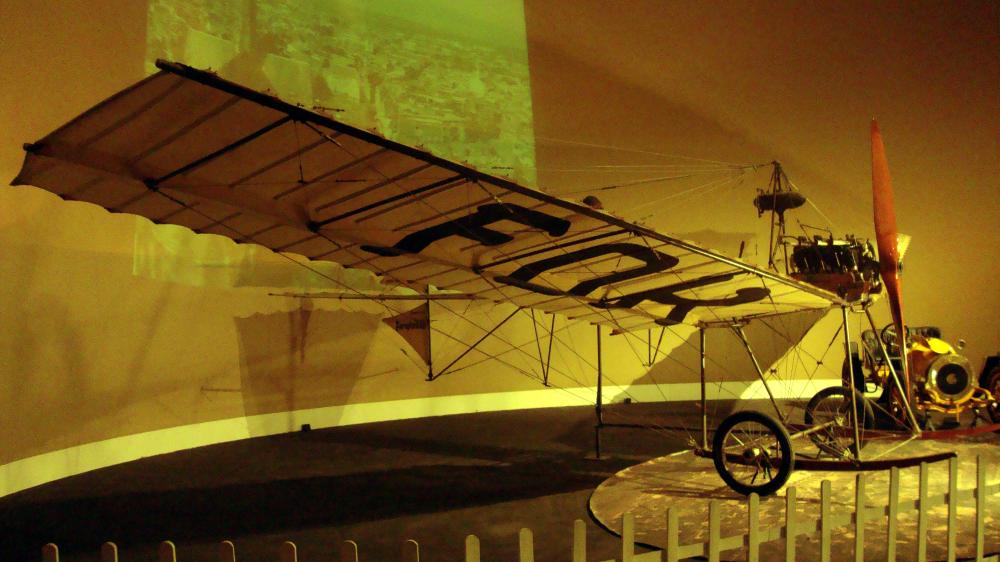
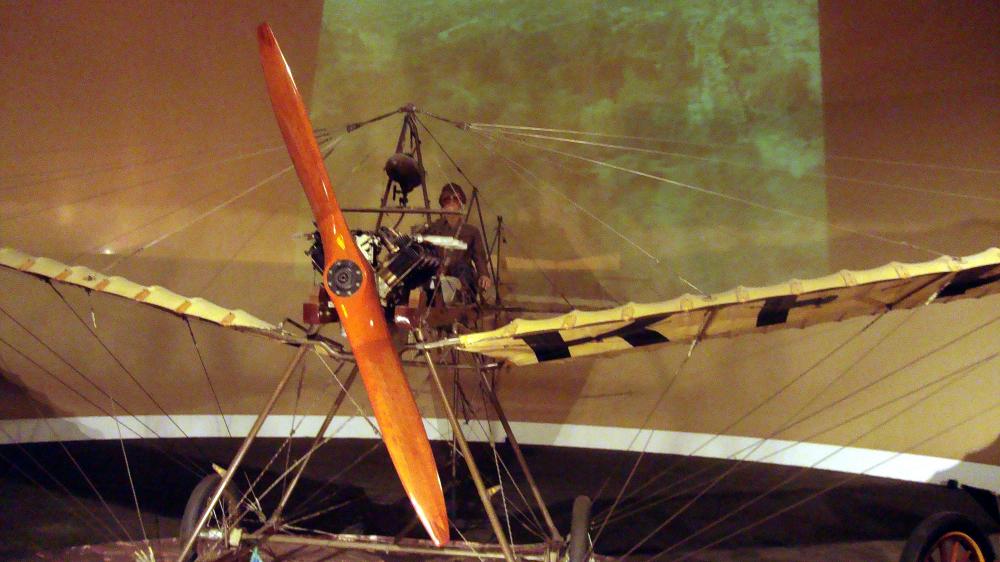
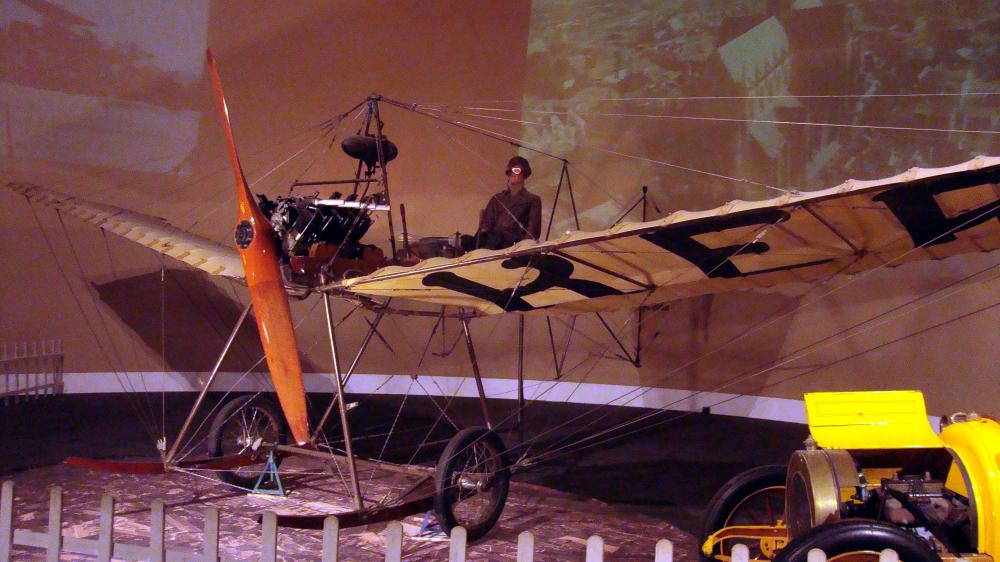
Fokker Spin Type C
Aviodrome, Lelystad, Netherlands, 30 November 2018
1912-1918: Spin | Dr.I
1918-1940 (military): D.VII | S.III |
C.V | S.IV
1919-1940 (commercial): F.II |
F.VII
1945-1996: S.11 |
F27 | 50 | 70 |
100 | F-16
Fokker Dr.I
The Fokker Dr.I (Dreidecker or "triplane"), often known simply as the Fokker Triplane, was a World War I fighter aircraft built by Fokker-Flugzeugwerke. The Dr.I saw widespread service in the spring of 1918. It became famous as the aircraft in which Manfred von Richthofen (the "Red Baron") gained his last 19 victories, and in which he was killed on 21 April 1918.
In February 1917, the Sopwith Triplane began to appear over the Western Front. Despite its single Vickers machine gun armament, the Sopwith swiftly proved itself superior to the more heavily armed Albatros fighters then in use by the Luftstreitkräfte. In April 1917, Anthony Fokker viewed a captured Sopwith Triplane while visiting Jasta 11. Upon his return to the Schwerin factory, Fokker instructed Reinhold Platz to build a triplane, but gave him no further information about the Sopwith design. Platz responded with the V.4, a small, rotary-powered triplane with a steel tube fuselage and thick cantilever wings, first developed during Fokker's government-mandated collaboration with Hugo Junkers. Initial tests revealed that the V.4 had unacceptably high control forces resulting from the use of unbalanced ailerons and elevators.
Instead of submitting the V.4 for a type test, Fokker produced a revised prototype designated V.5. The most notable changes were the introduction of horn-balanced ailerons and elevators, as well as longer-span wings. The V.5 also featured interplane struts, which were not necessary from a structural standpoint, but which minimized wing flexing. On 14 July 1917, Idflieg (Inspektion der Fliegertruppen or "Inspectorate of Flying Troops" was the bureau of the German Empire that oversaw German military aviation prior to and during World War I) issued an order for 20 pre-production aircraft. The V.5 prototype, serial 101/17, was tested to destruction at Adlershof on 11 August 1917.
The Fokker Dr.I handling in the air was easy, but it was hard to land, so sticks were mounted unter the wing tips for protection during unsuspected turns while landing.
The two machine guns were synchronized to fire through the propeller arc and could be fired independently. The basic synchronization mechanism was not invented by Fokker, but he improved it to perfection and was the first to use it in airplanes.
Production of the Dr.I was terminated after 322 aircraft in 1918. It was followed by the production of the Fokker D.VII.

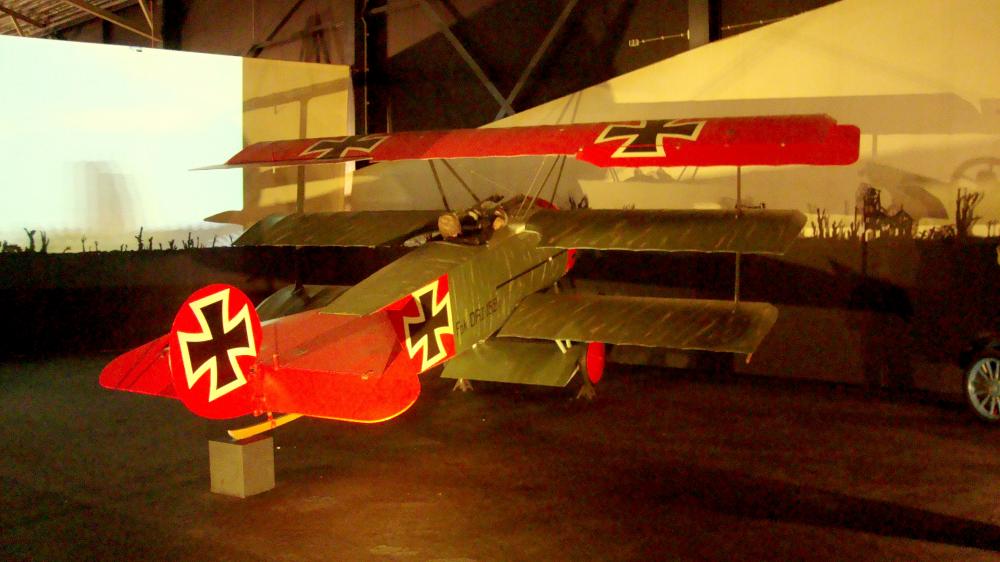
Fokker Dr.I (replica)
Aviodrome, Lelystad, Netherlands, 30 November 2018
1912-1918: Spin | Dr.I
1918-1940 (military): D.VII | S.III |
C.V | S.IV
1919-1940 (commercial): F.II |
F.VII
1945-1996: S.11 |
F27 | 50 | 70 |
100 | F-16
Fokker D.VII
The Fokker D.VII was a German World War I fighter aircraft designed by Reinhold Platz of the Fokker-Flugzeugwerke. Germany produced around 3,300 D.VII aircraft in the second half of 1918. In service with the Luftstreitkräfte, the D.VII quickly proved itself to be a formidable aircraft. The Armistice ending the war specifically required, as the fourth clause of the "Clauses Relating to the Western Front", that Germany was required to surrender all D.VIIs to the Allies. Surviving aircraft saw much service with many countries in the years after World War I.
In 1919, Fokker returned to the Netherlands and founded a new company near Amsterdam. He chose the name Nederlandse Vliegtuigenfabriek (Dutch Aircraft Factory) to conceal the Fokker brand because of his World War I involvement. Despite the strict disarmament conditions in the Treaty of Versailles, Fokker did not return home empty-handed. In 1919, he arranged an export permit and brought six entire trains of parts, and 180 types of aircraft across the Dutch-German border, among them 117 Fokker C.Is, D.VIIs, and D.VIIIs. This initial stock enabled him to set up shop quickly.
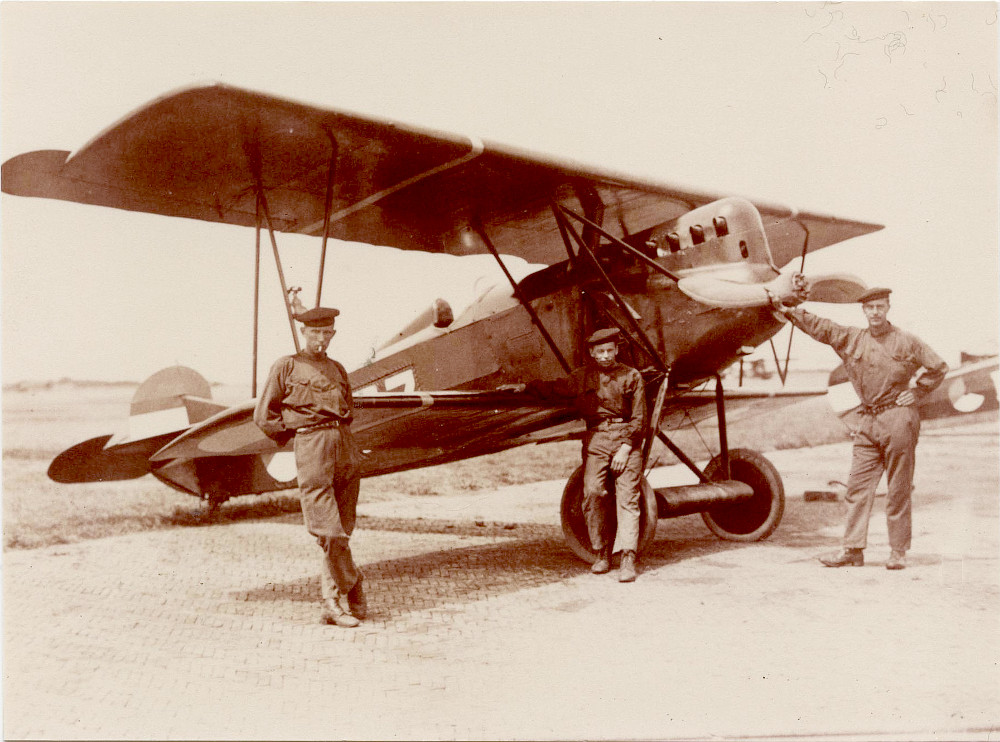
Fokker D.VII, registration D-27 or D-37, built 1920, serial number ????
MVK De Kooij, Den Helder, Netherlands, 1929 (photographer unknown)
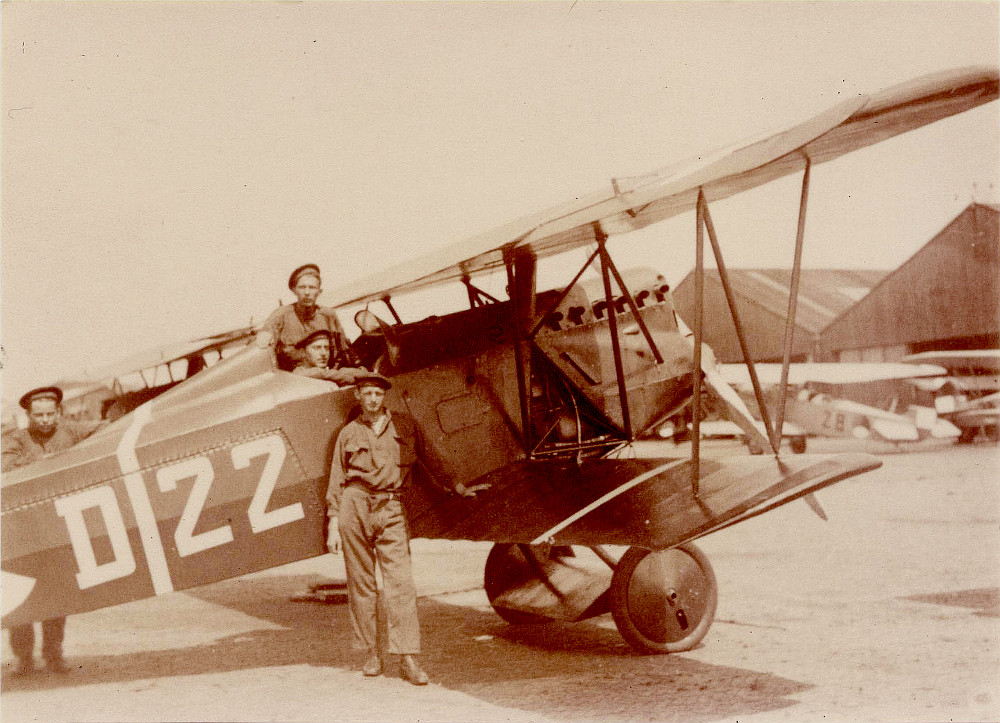
Fokker D.VII, registration D-22, built 1920, serial number ????
MVK De Kooij, Den Helder, Netherlands, 1930 (photographer unknown)
1912-1918: Spin | Dr.I
1918-1940 (military): D.VII | S.III |
C.V | S.IV
1919-1940 (commercial): F.II |
F.VII
1945-1996: S.11 |
F27 | 50 | 70 |
100 | F-16
Fokker F.II
The Fokker F.II was the first of a long series of commercial aircraft from the Fokker Aircraft Company, flying in 1919. In a biplane age, it presented a distinct clean, high-wing monoplane style that sold successfully across Europe and North America during the development of commercial passenger-carrying aviation.
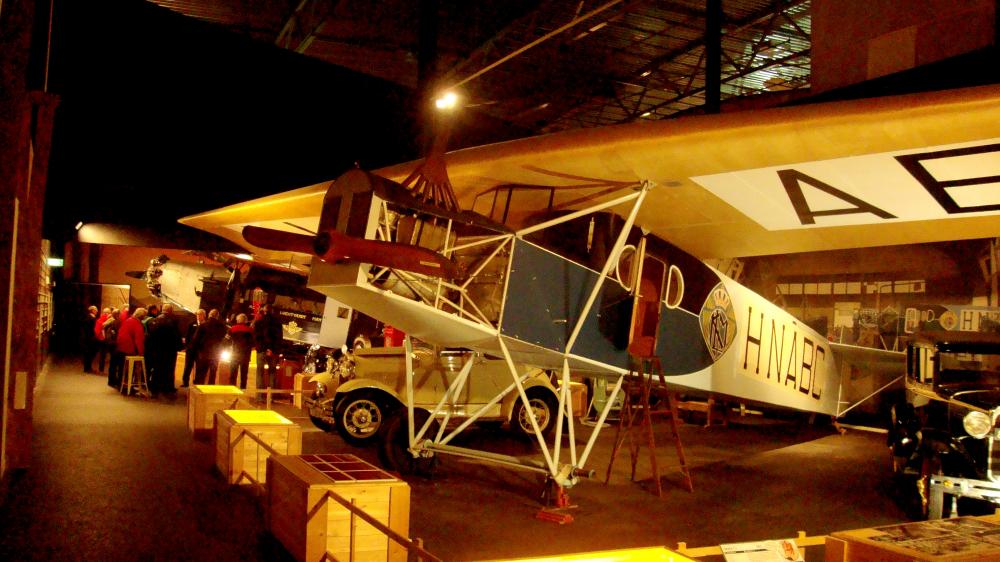
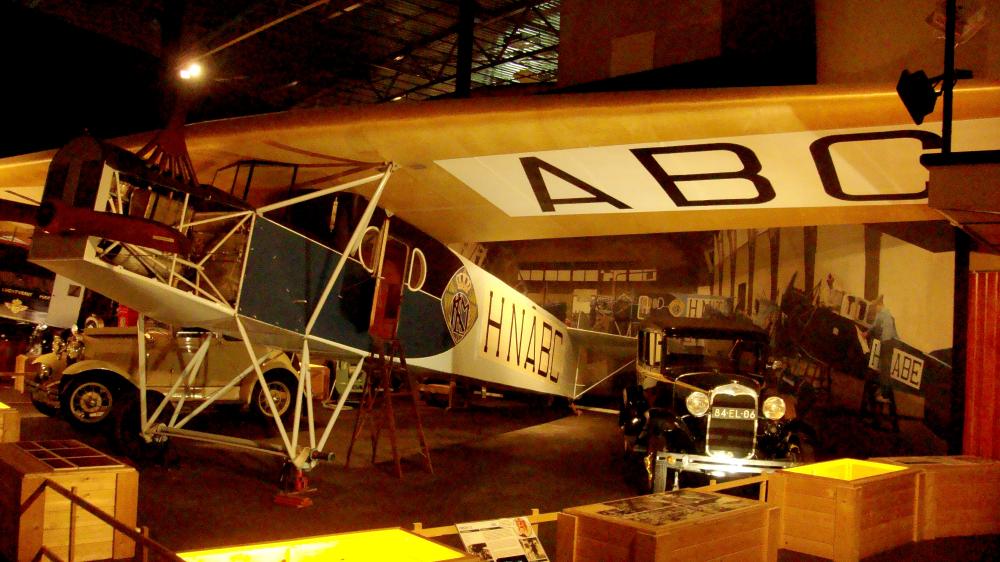
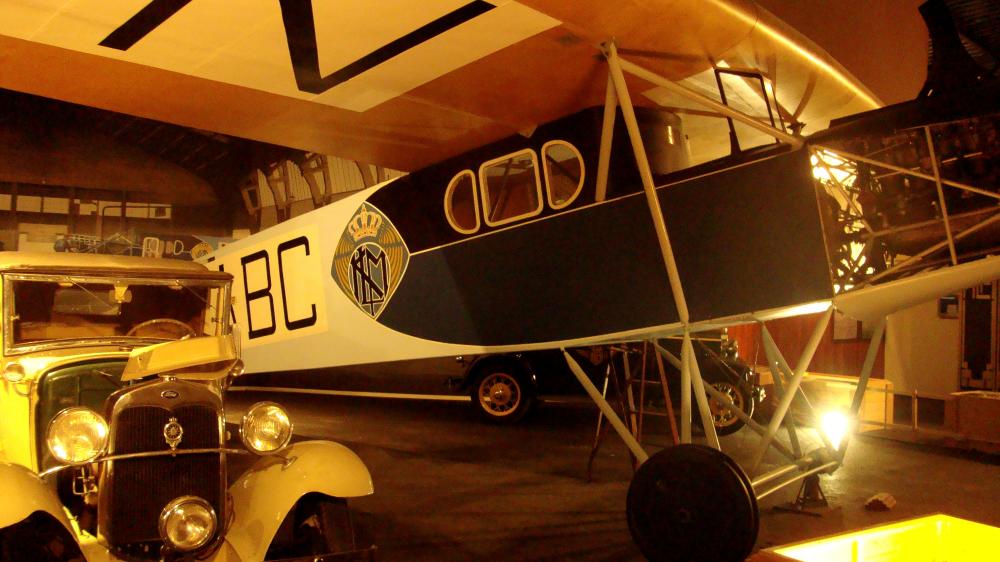
Fokker F.II, registration H-NABC, built 1920, serial number 1598 (replica)
Aviodrome, Lelystad, Netherlands, 30 November 2018
1912-1918: Spin | Dr.I
1918-1940 (military): D.VII | S.III |
C.V | S.IV
1919-1940 (commercial): F.II |
F.VII
1945-1996: S.11 |
F27 | 50 | 70 |
100 | F-16
Fokker F.VII
The Fokker F.VII was an airliner produced in the 1920s by Fokker, Fokker's American subsidiary Atlantic Aircraft Corporation, and other companies under licence.
The F.VII was designed as a single-engined transport aircraft by Walter Rethel. Five examples of this model were built for the Dutch airline KLM. One of these planes, registered H-NACC, was used in 1924 for the first flight from the Netherlands to the Dutch East Indies.
In 1925, while living in the US, Anthony Fokker heard of the inaugural Ford Reliability Tour, which was proposed as a competition for transport aircraft. Fokker had the company's head designer, Reinhold Platz, convert a single-engined F.VII A airliner to a trimotor configuration, powered by 200 hp Wright Whirlwind radial engines. The resulting aircraft was designated the Fokker F.VII A/3M. Following shipment to the US, it won the Ford Reliability Tour in late 1925. The aircraft became popularly known as the Fokker Trimotor.
The structure of the A/3M consisted of a fabric-covered steel-tube fuselage and a plywood-skinned wooden wing. The Fokker F.VII B/3M had a slightly increased wing area over the A/3M, with power increased to 220 hp per engine, while the F.10 was slightly enlarged, carrying 12 passengers in an enclosed cabin.
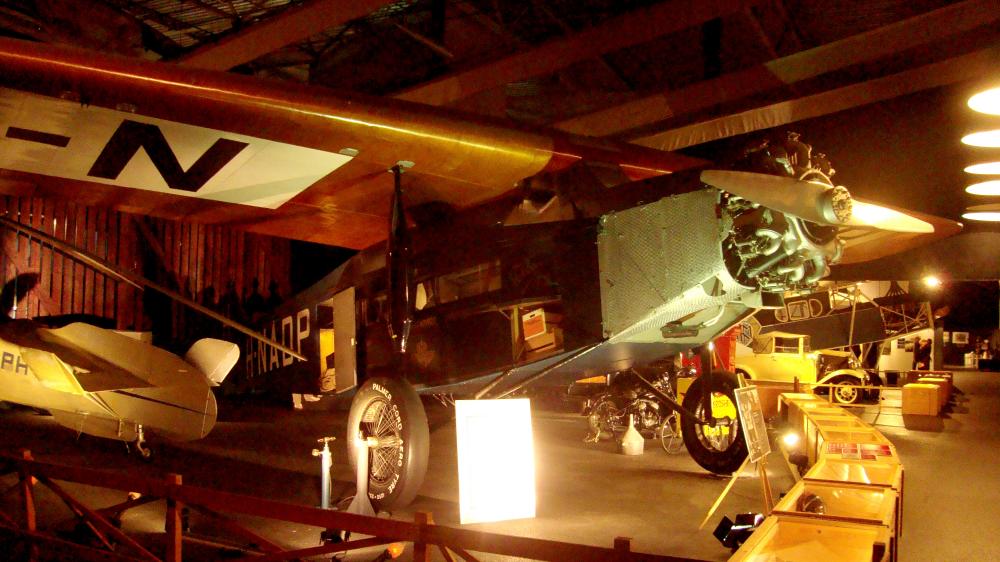
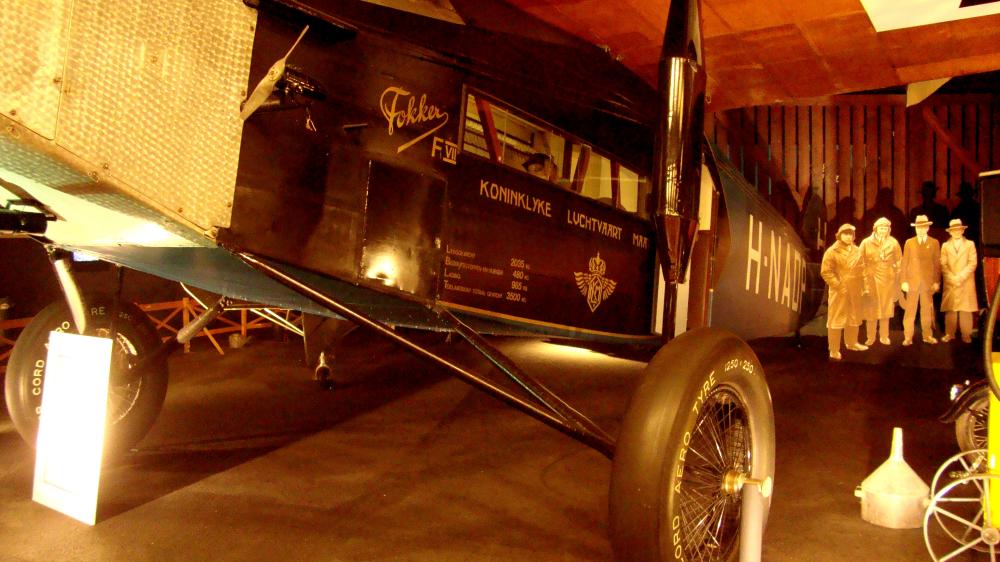
Fokker F.VII, registration H-NADP, built 1928, serial number 5054
Aviodrome, Lelystad, Netherlands, 30 November 2018
1912-1918: Spin | Dr.I
1918-1940 (military): D.VII | S.III |
C.V | S.IV
1919-1940 (commercial): F.II |
F.VII
1945-1996: S.11 |
F27 | 50 | 70 |
100 | F-16
Fokker S.III
The Fokker S.III was a biplane trainer aircraft of the 1920s. It was of conventional configuration, seating the pilot and instructor in tandem, open cockpits. The single-baywings were staggered and of unequal span.
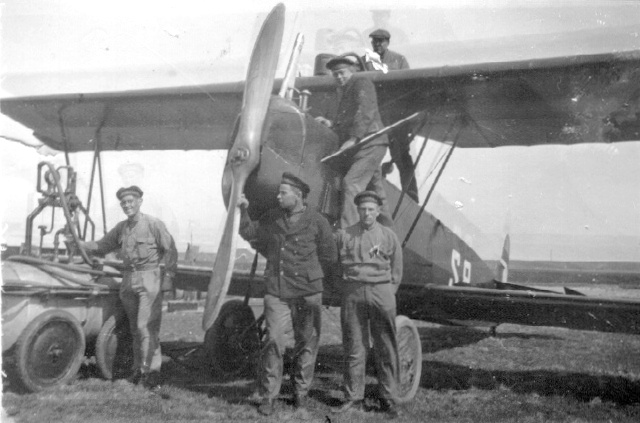
Fokker S.III, registration S-8, built 1924, serial number ????
MVK De Kooij, Den Helder, Netherlands, around 1930 (photographer unknown)
1912-1918: Spin | Dr.I
1918-1940 (military): D.VII | S.III |
C.V | S.IV
1919-1940 (commercial): F.II |
F.VII
1945-1996: S.11 |
F27 | 50 | 70 |
100 | F-16
Fokker C.V
The Fokker C.V was a light reconnaissance and bomber biplane aircraft manufactured by Fokker. It was designed by Anthony Fokker and the series manufacture began in 1924 at Fokker in Amsterdam.
The aircraft was intended as a two-seat reconnaissance and bomber aircraft. When shown to the public in 1924 it was manufactured in a variety of versions; the customer could choose from five different wing constructions (which varied in wing span). The radial engines could give between 336–723 kW (451–970 hp). The landing gear could be changed from wheels to pontoons. The aircraft became an export success for Fokker, it was sold and/or license manufactured in Bolivia, China, Denmark, Finland, Hungary, Italy, Japan, the Netherlands, Norway, Switzerland, the Soviet Union and the US.
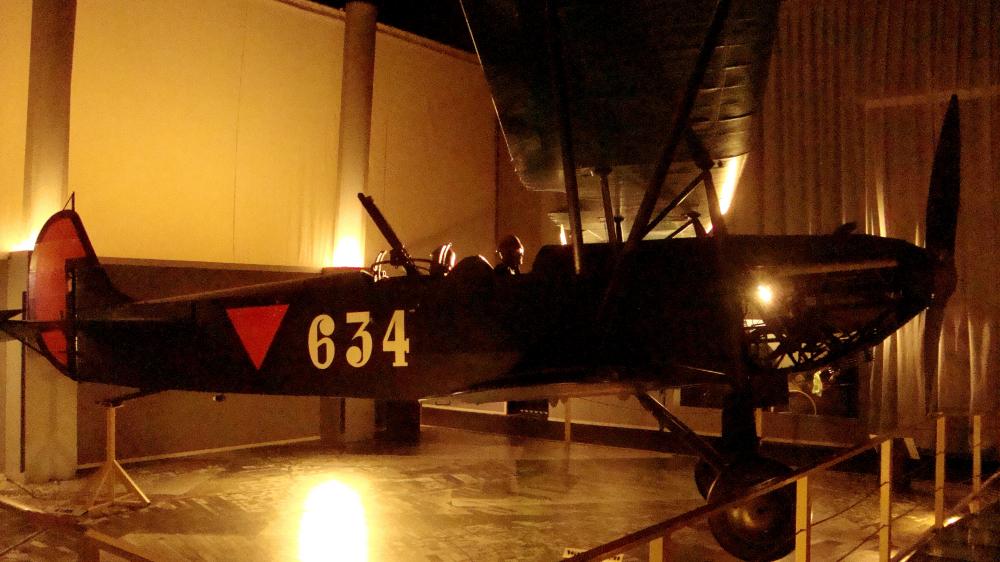
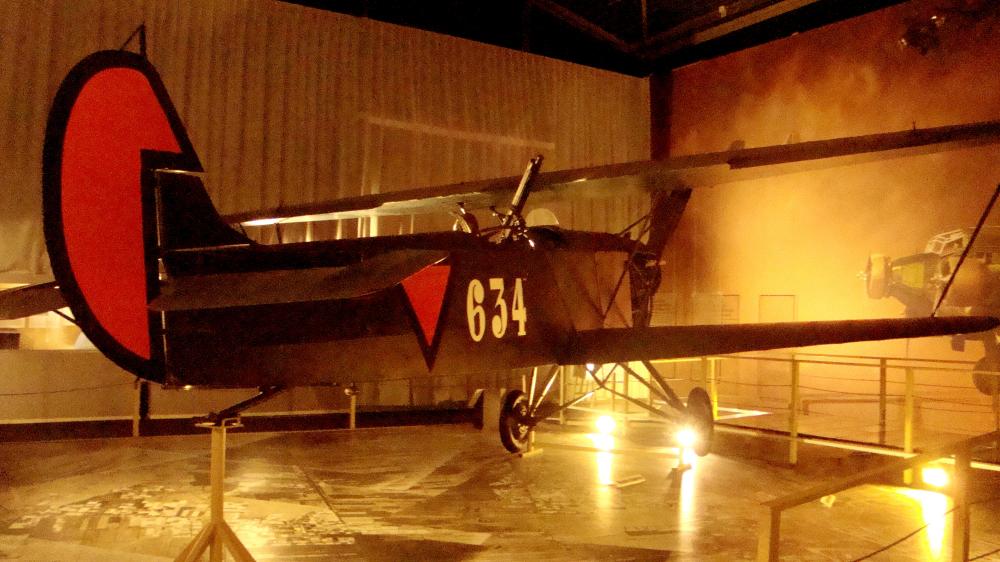
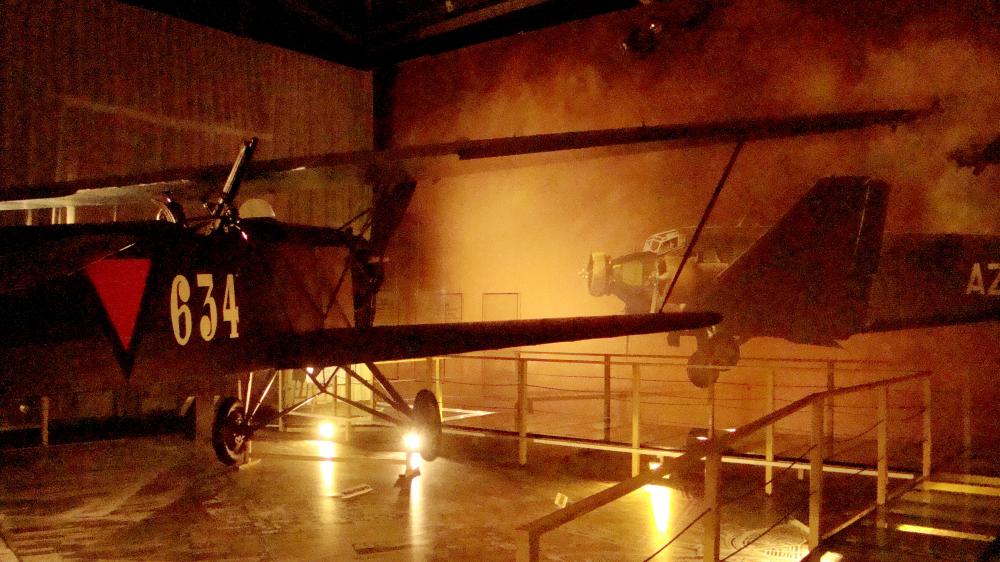
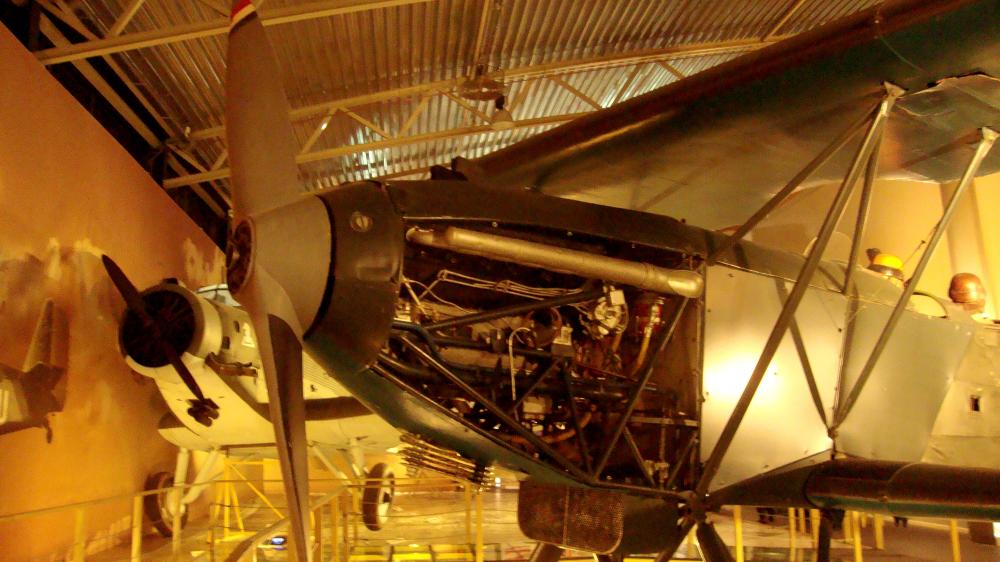
Fokker C.Vd, registration 634, built 1926, serial number ????
Aviodrome, Lelystad, Netherlands, 30 November 2018
(in service May 1926 as C.V 312, converted in 1934 to C.Vd 634, out of service May 1940)
1912-1918: Spin | Dr.I
1918-1940 (military): D.VII | S.III |
C.V | S.IV
1919-1940 (commercial): F.II |
F.VII
1945-1996: S.11 |
F27 | 50 | 70 |
100 | F-16
Fokker S.IV
The Fokker S.IV was a military trainer aircraft produced in the Netherlands in the mid-1920s. It was a conventional, single-bay biplane with staggered wings of unequal span braced with N-struts, essentially a radial-engined development of the S.III. The pilot and instructor sat in tandem, open cockpits and the undercarriage was of fixed, tailskid type with a cross-axle between the main units. The Royal Netherlands Army Aviation Group purchased 30 examples and used them right up to the German invasion of the Netherlands in 1940. On 14 May that year, a few surviving S.IVs escaped to France alongside some S.IX trainers, but never flew again.
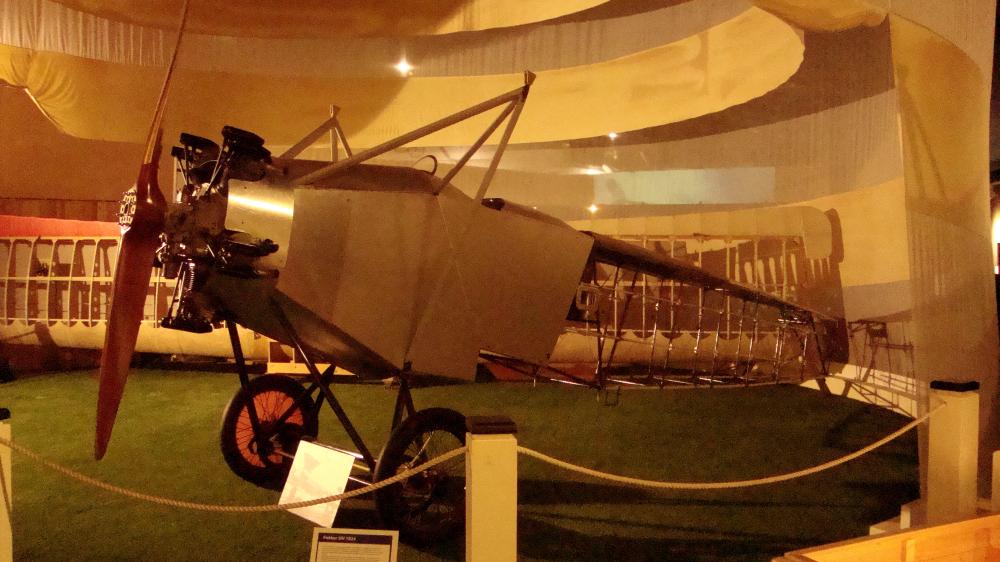
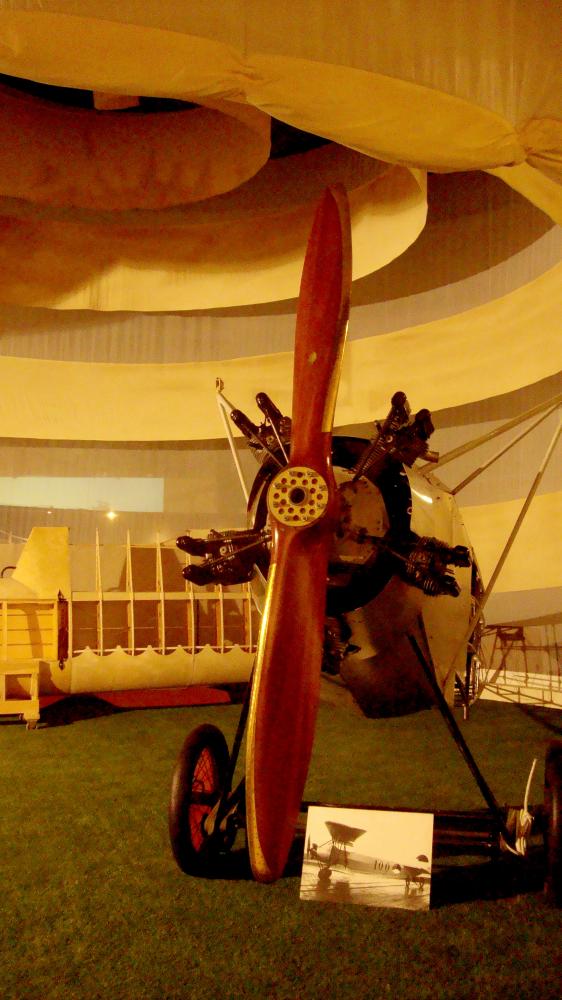
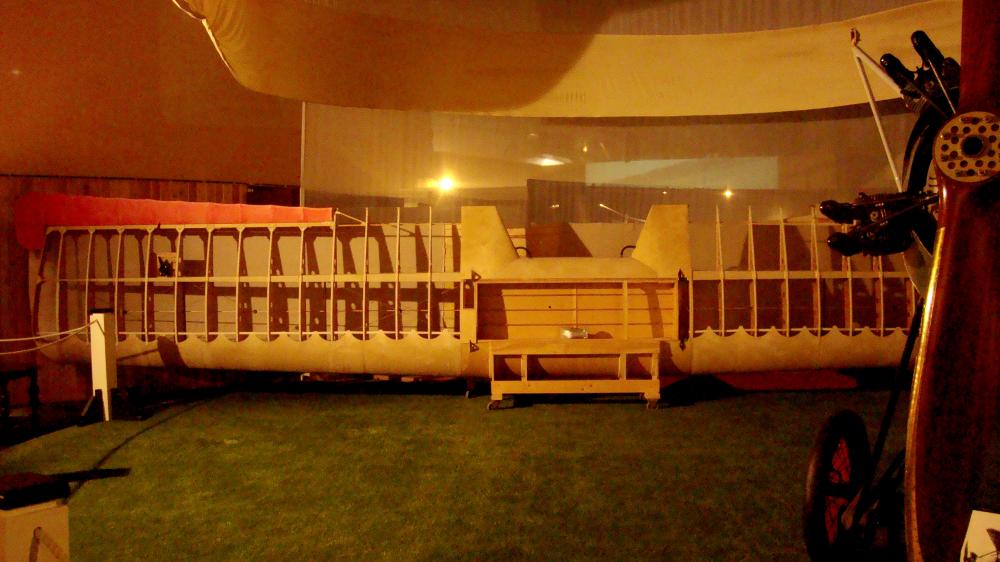
Fokker S.IV (replica)
Aviodrome, Lelystad, Netherlands, 30 November 2018
1912-1918: Spin | Dr.I
1918-1940 (military): D.VII | S.III |
C.V | S.IV
1919-1940 (commercial): F.II |
F.VII
1945-1996: S.11 |
F27 | 50 | 70 |
100 | F-16
Fokker S.11 Instructor
The Fokker S.11 Instructor is a single engine two seater propeller aircraft designed and manufactured by the former Dutch aircraft manufacturer Fokker.
One of the first activities undertaken by Fokker after World War II was the design of a new military aircraft for initial pilot training, the S.11 Instructor. An aircraft trader already placed orders for 100 of these aircraft in 1946, before construction had even begun. The first prototype flew at Schiphol on 18 December 1947. During testing in early 1948 it was found that some aerodynamic changes had to be made to improve the handling of the aircraft. Later that year demonstration flights for several air forces followed and eventually many S-11s were sold to the Royal Netherlands Air Force, Israeli Air Force, Italian Air Force, Brazilian Air Force, Paraguayan Air Force and Bolivian Air Force.
See Stichting Fokker Four.
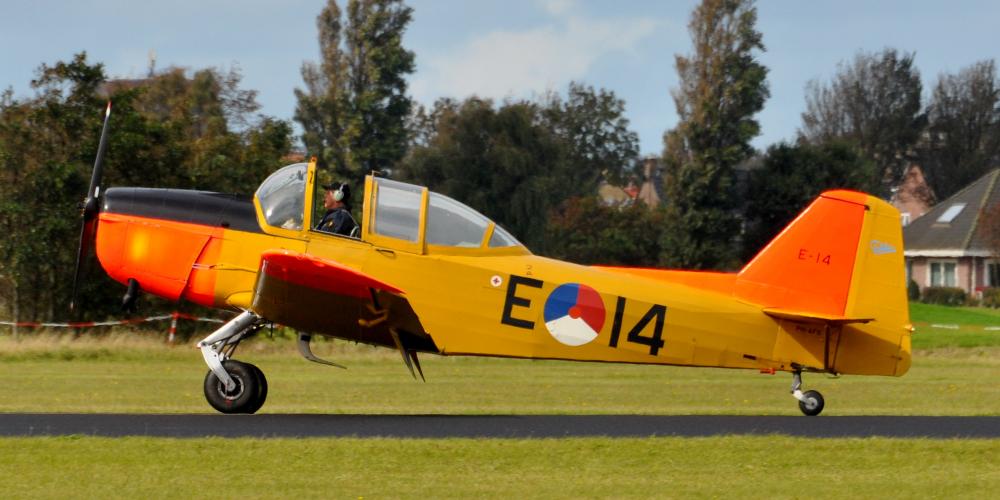
Fokker S.11.1, registration PH-AFS (former E-14), built 1950, serial number 6205
Den Helder Airport (Maritiem Vliegkamp De Kooy) (DHR/EHKD), Netherlands, 16 September 2017
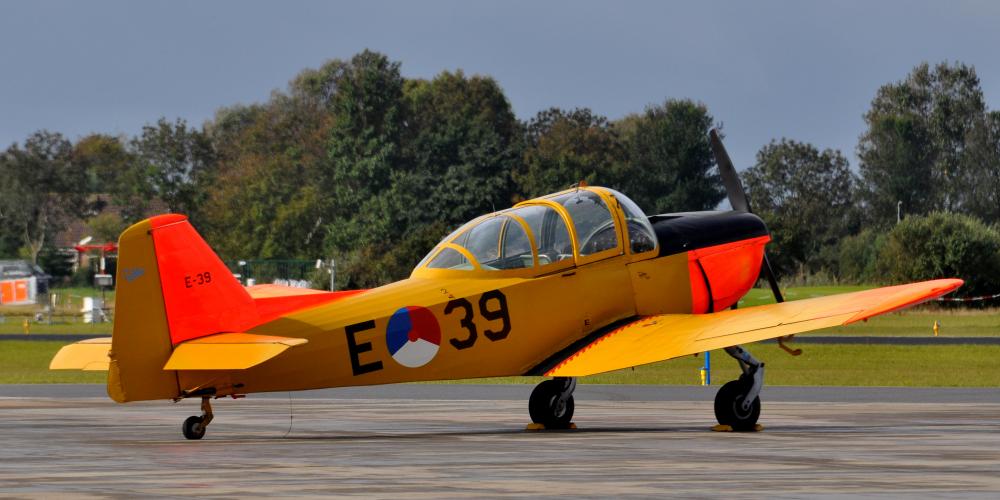
Fokker S.11.1, registration PH-HOG (former E-39), built 1951, serial number 6275
Den Helder Airport (Maritiem Vliegkamp De Kooy) (DHR/EHKD), Netherlands, 16 September 2017
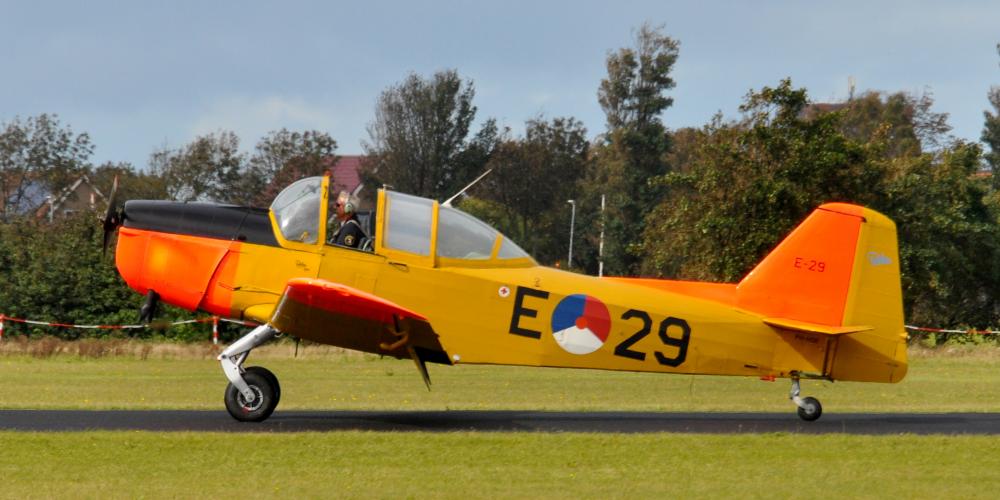
Fokker S.11.1, registration PH-HOK (former E-29), built 1952, serial number 6272
Den Helder Airport (Maritiem Vliegkamp De Kooy) (DHR/EHKD), Netherlands, 16 September 2017
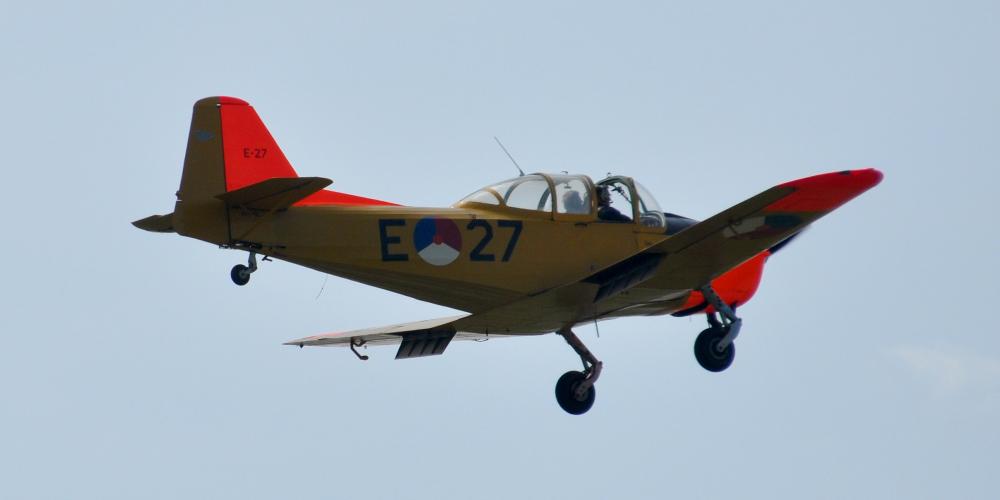
Fokker S.11.1, registration PH-HOL (former E-27), built 1950, serial number 6270
Vliegbasis Volkel (UDE), Uden, Netherlands, 28 May 2017
1912-1918: Spin | Dr.I
1918-1940 (military): D.VII | S.III |
C.V | S.IV
1919-1940 (commercial): F.II |
F.VII
1945-1996: S.11 |
F27 | 50 | 70 |
100 | F-16
Fokker F27 Friendship
The Fokker F27 Friendship is a turboprop airliner. Design started in the 1950s as a replacement to the successful Douglas DC-3 airliner. The first prototype, registered PH-NIV, first flew on 24 November 1955. In 1956, Fokker signed a licensing deal with the US aircraft manufacturer Fairchild for the latter to construct the F27 in the USA. The first U.S.-built aircraft flew on April 12, 1958.
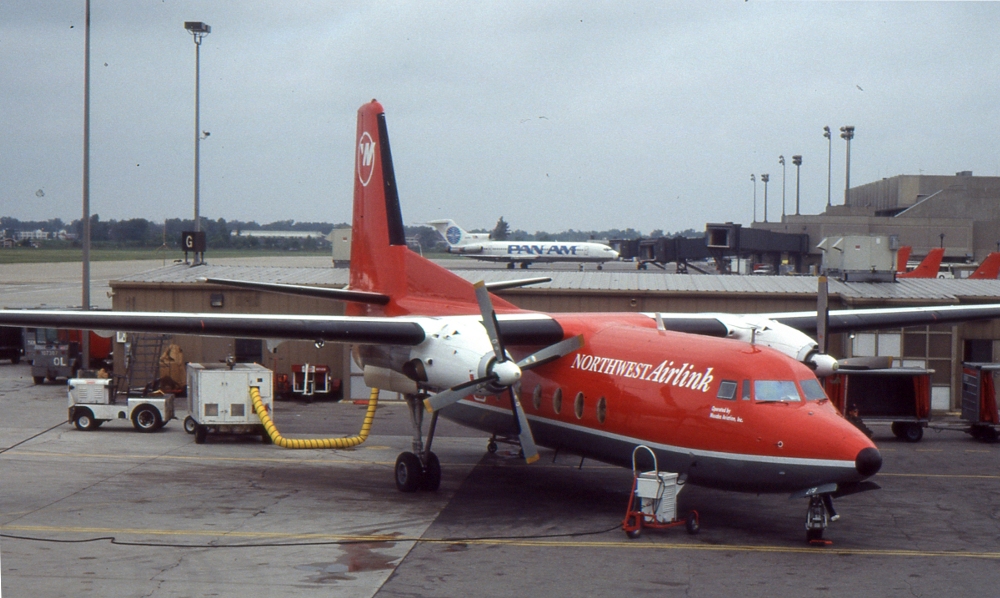
Fokker F27-200 Friendship, registration N275MA, built 1964, serial number 1014-2006
Detroit Metropolitan Wayne County Airport (DTW), Detroit, MI, USA, 17 August 1990
1912-1918: Spin | Dr.I
1918-1940 (military): D.VII | S.III |
C.V | S.IV
1919-1940 (commercial): F.II |
F.VII
1945-1996: S.11 |
F27 | 50 | 70 |
100 | F-16
Fokker 50
The Fokker 50 is a turboprop-powered airliner, designed as a refinement of and successor to the highly successful Fokker F27 Friendship.
The Fokker 50 was developed during the early 1980s following a decline in the sales of the company's earlier F27 Friendship. It was decided that the new airliner would be a derivative of its predecessor, sharing much of its airframe and design features, while incorporating new advances and several improvements, such as the adoption of Pratt & Whitney Canada PW127B turboprop engines, in order to produce a successor that had a 30 per cent reduction in fuel consumption over the F27.
The Fokker 50 performed its maiden flight on 28 December 1985, and entered revenue service during 1987.

Fokker 50 (F-27-050), registration PH-OSI, built 1986, serial number 10688
Aviodrome, Lelystad, Netherlands, 30 November 2018
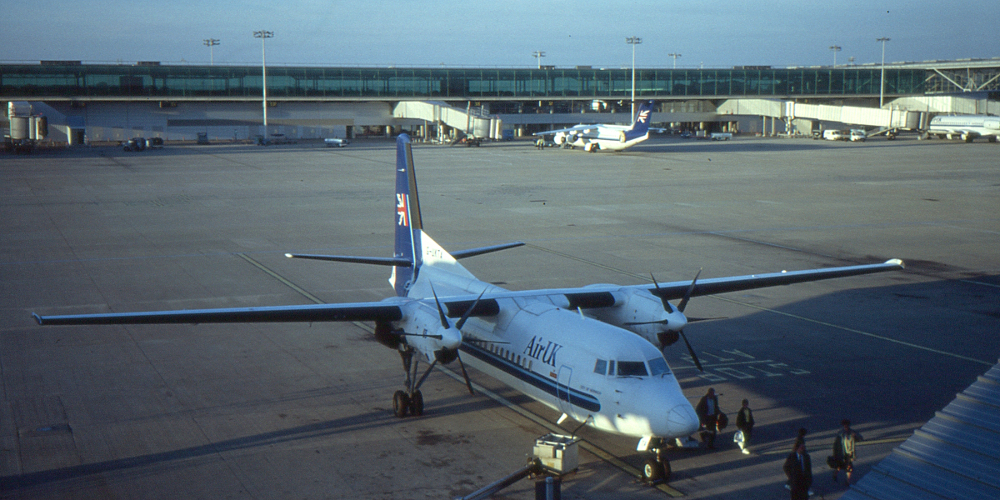
Fokker 50 (F-27 Mk050), registration G-UKTA, built 1992, serial number 20246
London Stansted Airport (STN), London, United Kingdom, 10 July 1997
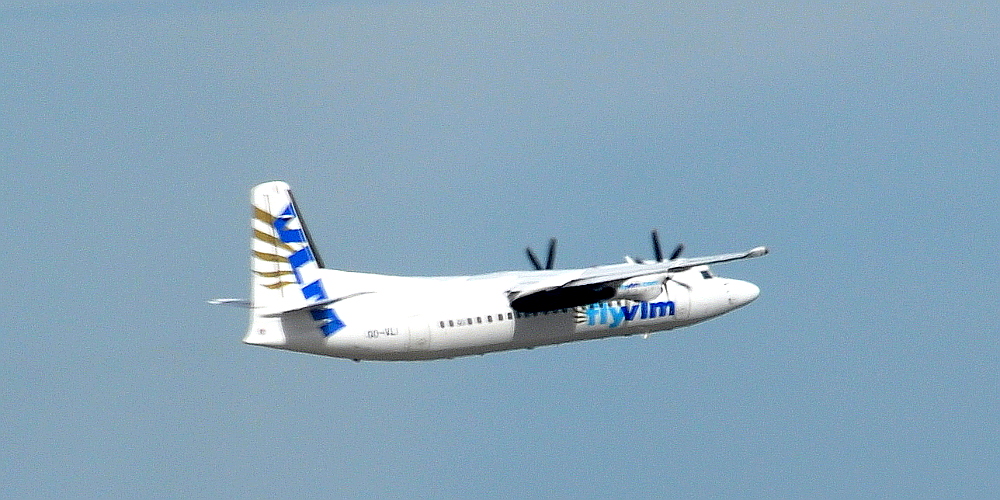
Fokker 50 (F-27-050), registration OO-VLI, built 1991, serial number 20226
Munich Airport (MUC/EDDM), Germany, 4 April 2018
1912-1918: Spin | Dr.I
1918-1940 (military): D.VII | S.III |
C.V | S.IV
1919-1940 (commercial): F.II |
F.VII
1945-1996: S.11 |
F27 | 50 | 70 |
100 | F-16
Fokker 70
The Fokker 70 is a narrow-body, twin-engined, medium-range, turbofan regional airliner produced as a smaller version of the Fokker 100. Both the F70 and F100 were preceded by the first jet airliner manufactured by Fokker, the Fokker F28 Fellowship.
Development of the airliner started in November 1992 with the aim to replace its aging Fokker F28 airliner with a more modern and fuel efficient aircraft. The Fokker 70's first flight occurred on 4 April 1993, at the company's base at Woensdrecht in southern Netherlands, and had a duration of three hours. The first production aircraft first flew in July 1994.
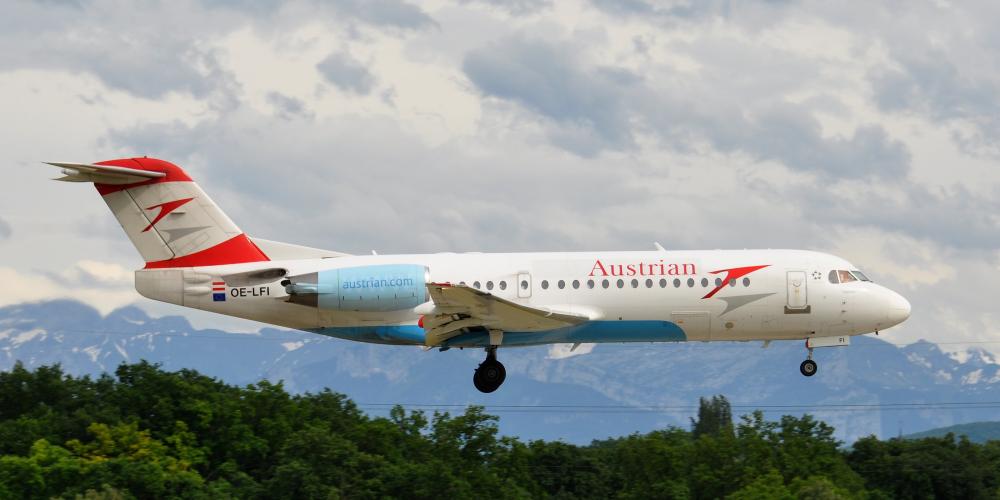
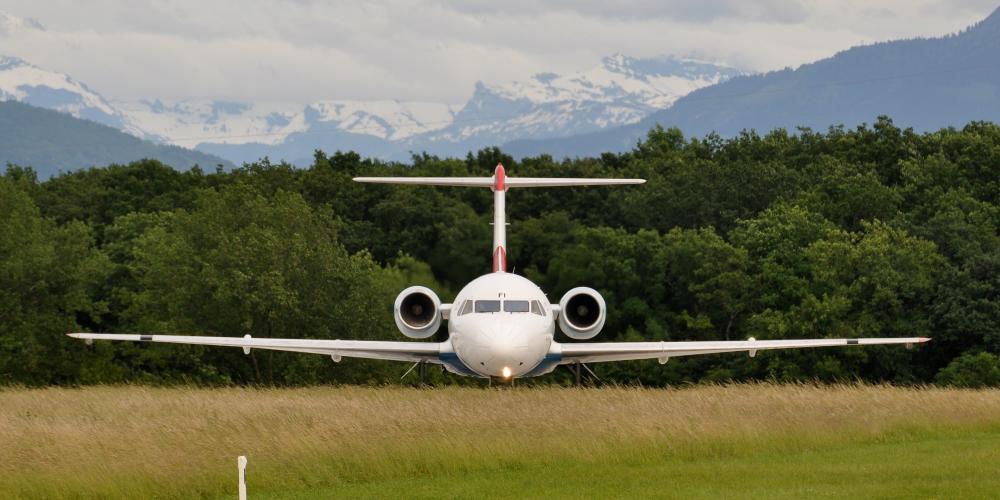
Fokker 70, registration OE-LFI, built 1995, serial number 11529
Cointrin (GVA), Geneva, Switzerland, 15 June 2016
1912-1918: Spin | Dr.I
1918-1940 (military): D.VII | S.III |
C.V | S.IV
1919-1940 (commercial): F.II |
F.VII
1945-1996: S.11 |
F27 | 50 | 70 |
100 | F-16
Fokker 100
The Fokker 100 is a medium-sized, twin-turbofan airliner from Fokker. Upon introduction, the type possessed low operational costs and had scant competition in the 100-seat short-range class of regional airliner, which contributed to strong sales during the late 1980s. It was the largest jet airliner built by Fokker before its bankruptcy in 1996.
Development started in 1983. On 30 November 1986, the first prototype, PH-MKH, flew for the first time. In February 1988, the first deliveries started.

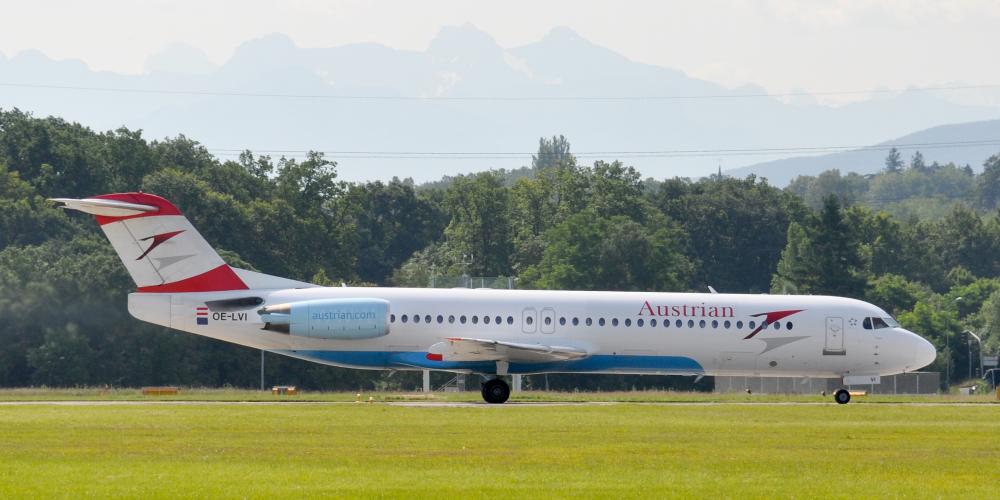
Fokker 100, registration OE-LVI, built 1993, serial number 11468
Cointrin (GVA), Geneva, Switzerland, 8 July 2016
1912-1918: Spin | Dr.I
1918-1940 (military): D.VII | S.III |
C.V | S.IV
1919-1940 (commercial): F.II |
F.VII
1945-1996: S.11 |
F27 | 50 | 70 |
100 | F-16
Fokker F-16 Fighting Falcon
The General Dynamics F-16 Fighting Falcon is a single-engine supersonic multirole fighter aircraft developed for the United States Air Force (USAF). Designed as an air superiority day fighter, it evolved into a successful all-weather multirole aircraft. It is one of the Western world's most-produced jet fighters.
Co-production in the Netherlands was officially launched on 1 July 1977 at the Fokker factory. The first aircraft was delivered in June 1979.
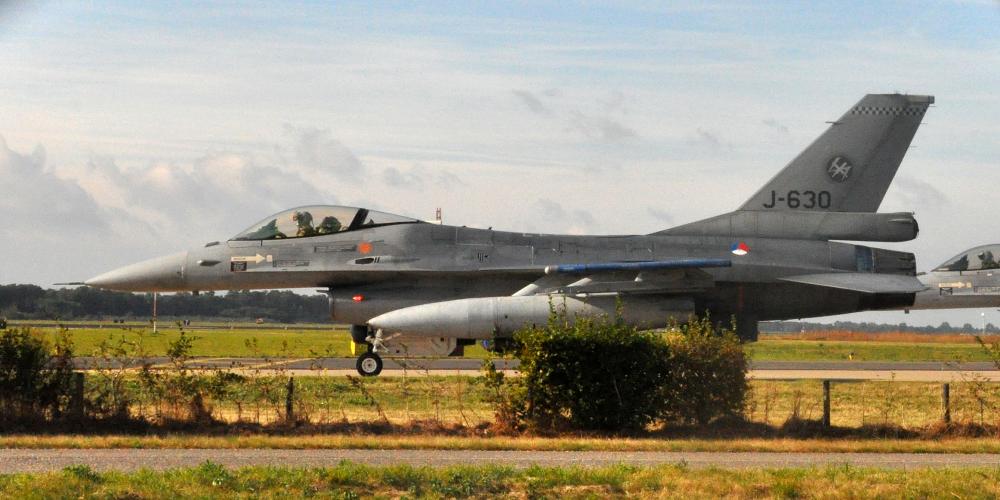
F-16AM Fighting Falcon, registration J-630, built 1980, serial number 6D-62
Vliegbasis Volkel (UDE), Uden, Netherlands, 28 September 2016
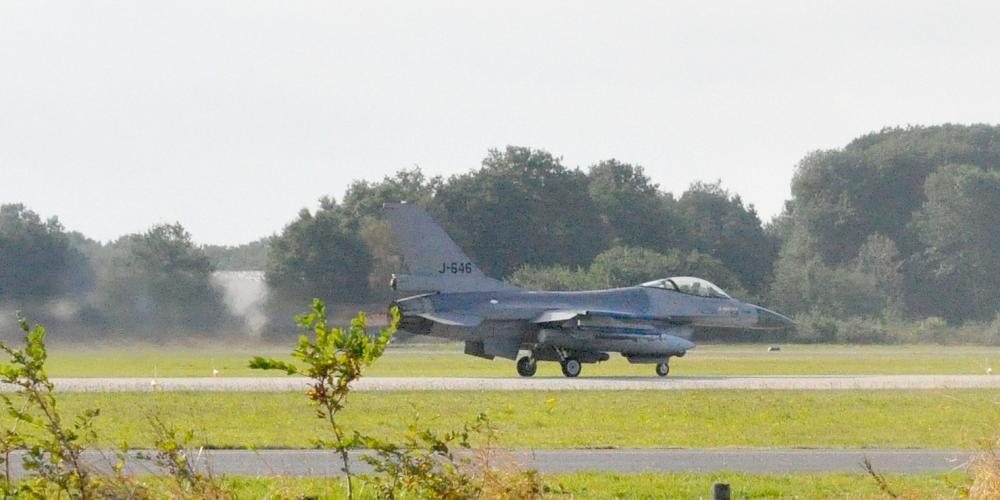
F-16AM Fighting Falcon, registration J-646, built 1984, serial number 6D-78
Vliegbasis Volkel (UDE), Uden, Netherlands, 28 September 2016
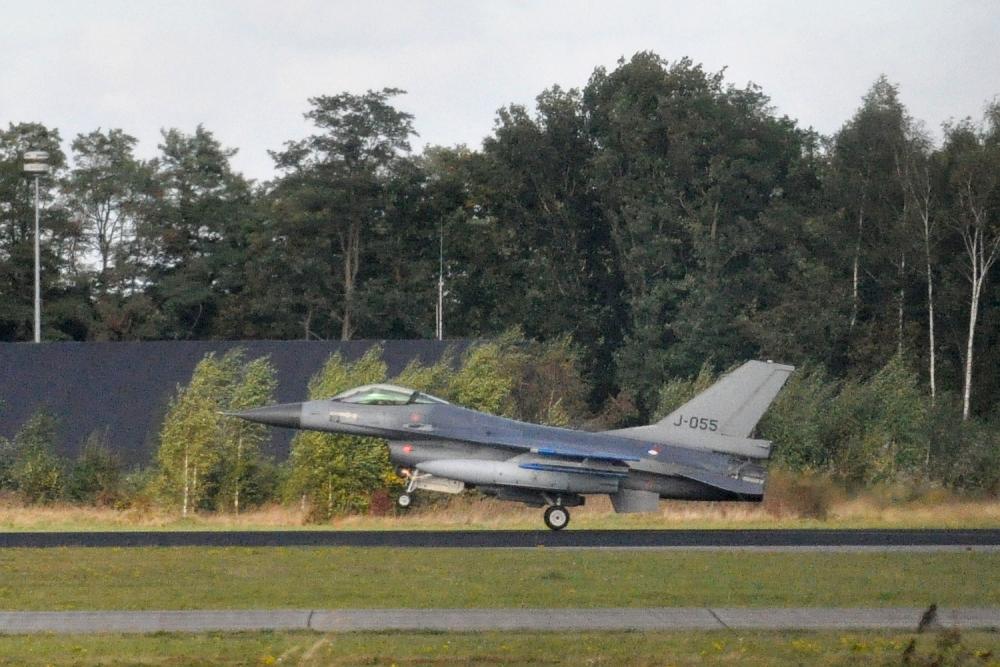
F-16AM Fighting Falcon, registration J-055, built 1988, serial number 6D-138
Vliegbasis Volkel (UDE), Uden, Netherlands, 28 September 2016
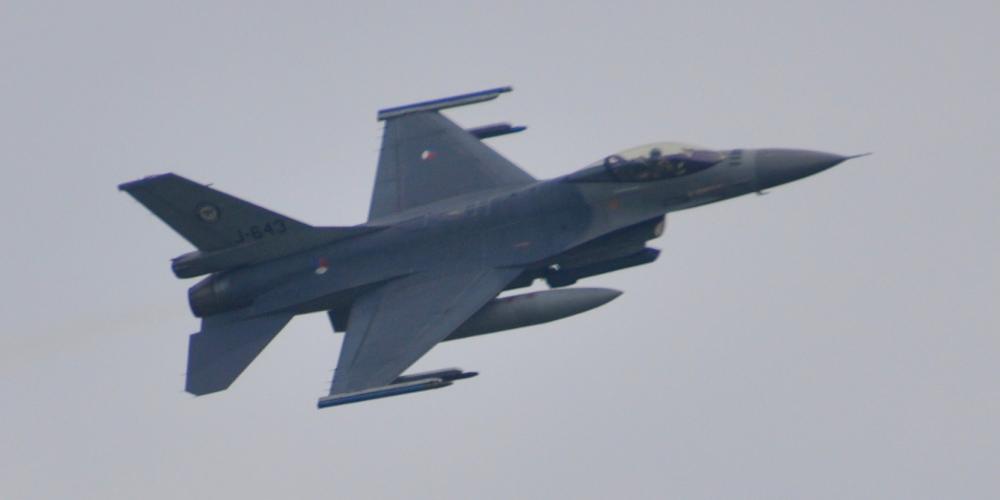
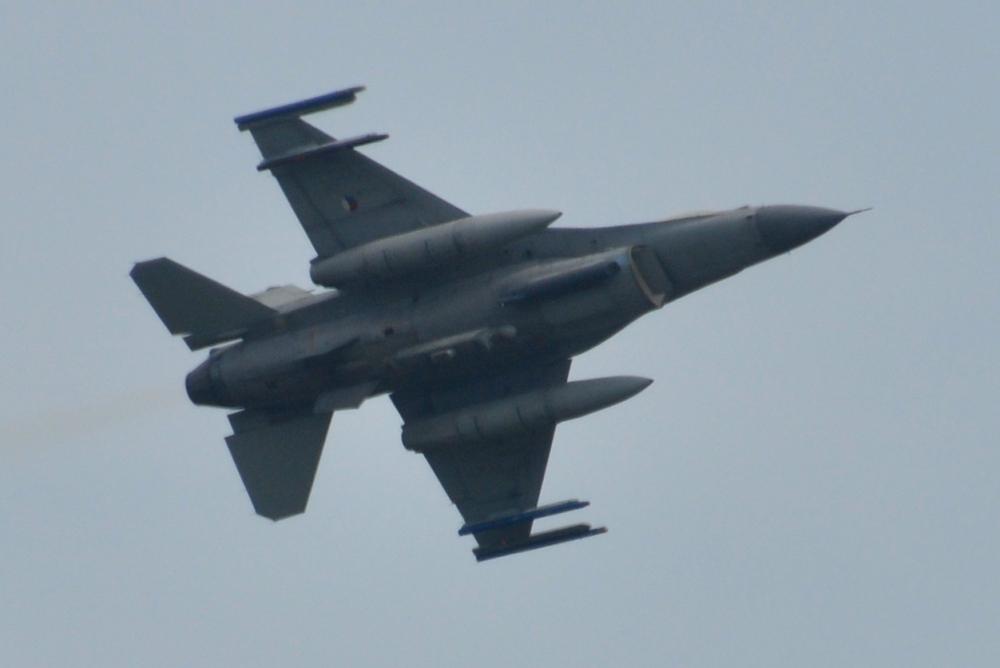
F-16AM Fighting Falcon, registration J-643, built 1984, serial number 6D-75
Volkel, Netherlands, 28 May 2017
1912-1918: Spin | Dr.I
1918-1940 (military): D.VII | S.III |
C.V | S.IV
1919-1940 (commercial): F.II |
F.VII
1945-1996: S.11 |
F27 | 50 | 70 |
100 | F-16
|




































